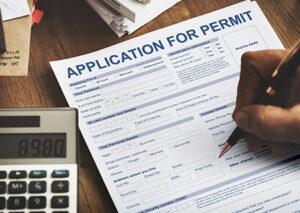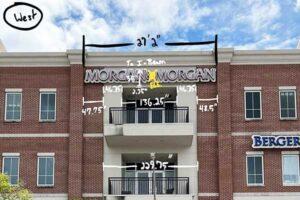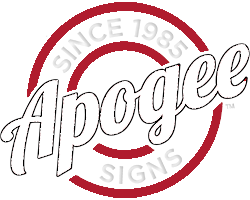
In the realm of urban planning and local governance, the seemingly mundane task of erecting a sign can often transform into a labyrinthine journey through bureaucratic red tape. The process of obtaining a sign permit, a seemingly simple endeavor, can quickly spiral into a time-consuming and frustrating ordeal. From strict regulations to convoluted application procedures, the hurdles faced by businesses and individuals seeking to display signage are many. Here, we delve into the troubles one typically encounters when endeavoring to get a sign permit approved.
Regulatory Quagmire:
At the heart of the challenge lies the intricate web of regulations governing signage. Municipalities, zoning ordinances, and local authorities all have their own sets of rules dictating the size, placement, design, and even the content of signs. These regulations are often complex and can vary significantly from one jurisdiction to another and can even vary widely within the same jurisdiction.
Navigating this regulatory landscape requires a keen understanding of local ordinances and zoning codes. What may be permissible in one area could be prohibited in another, and the slightest deviation from the prescribed guidelines can result in rejection or delay of the permit application.
The Application Process:
Once armed with an understanding of the regulations, applicants must embark on the arduous journey of the application process itself. This typically involves filling out extensive paperwork, providing detailed plans and specifications of the proposed signage, and paying various fees.
The paperwork often requires precise information, including the dimensions of the sign, its materials, method of installation, and compliance with accessibility standards. Any inaccuracies or omissions can lead to delays as the application bounces back and forth between the applicant and the permitting authority.
Engineering Evaluation:
In the labyrinth of sign permit approval, one additional hurdle often arises: the necessity for an engineering evaluation. Particularly for larger or more complex signage projects, local authorities may require an assessment by professional engineers to ensure compliance with safety standards. Engineers scrutinize factors like wind load calculations, structural integrity, and adherence to building codes, adding another layer of complexity to the process. Any identified deficiencies or safety concerns must be rectified before permit approval, prolonging the timeline and escalating project costs. While this scrutiny enhances public safety, it also compounds the challenges faced by applicants, necessitating coordination with engineering professionals and potentially leading to further delays in the approval process.
before permit approval, prolonging the timeline and escalating project costs. While this scrutiny enhances public safety, it also compounds the challenges faced by applicants, necessitating coordination with engineering professionals and potentially leading to further delays in the approval process.
Navigating Public Opinion:
In many cases, the process of obtaining a sign permit extends beyond mere compliance with regulations. Public opinion and community input can also play a significant role. Proposed signage may face opposition from local residents or community groups concerned about aesthetics, light pollution, or other environmental impacts.
Public hearings and community meetings may be required, adding further layers of complexity and potential delay to the approval process. Negotiating with stakeholders and addressing their concerns can be time-consuming and may require modifications to the sign design or location.
Unforeseen Challenges:
Even with meticulous planning and preparation, unforeseen challenges can arise that derail the permit approval process. Issues such as property disputes, historical preservation requirements, or changes in local leadership can all impact the fate of a sign permit application.
Moreover, bureaucratic inefficiencies and staffing shortages within permitting departments can lead to delays and frustration for applicants. In some cases, backlogs and administrative bottlenecks can result in prolonged waiting periods, causing financial strain for businesses eager to display their signage and attract customers.
Conclusion:
Obtaining a sign permit may seem like a straightforward task, but in reality, it is anything but. Navigating the maze of regulations, bureaucracy, and public opinion can be a daunting challenge for businesses and individuals alike. From the intricacies of compliance to the uncertainties of public opinion and unforeseen challenges, the road to sign permit approval is fraught with obstacles.
While signage plays a crucial role in communication and commerce, the process of obtaining the necessary permits can often test the patience and resilience of even the most determined applicants. As cities and communities continue to evolve, finding ways to streamline the permitting process and strike a balance between regulation and economic vitality will remain an ongoing challenge for policymakers and urban planners alike.
